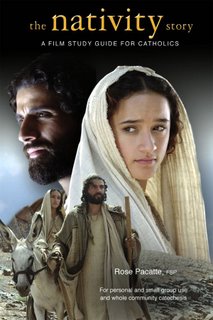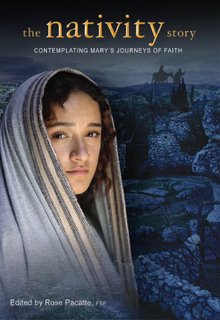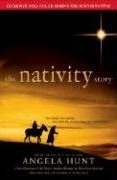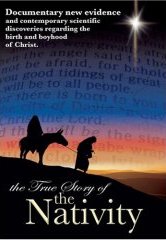Interview with Wyck Godfrey (producer)
For Unto Us a Film Is Born
When New Line told producer Wyck Godfrey to make The Nativity Story in just 10 months, he knew it would take a miracle. Turns out he got a few along the way; the film releases worldwide Dec. 1.

When Wyck Godfrey and longtime friend Marty Bowen formed their own company—Temple Hill Productions—in January, they thought they'd take some time figuring out what movies they wanted to make.
But by the end of the month, they already had one in the can. And the studio, New Line Cinema, wanted it in a hurry—by this Christmas. Movies are rarely made that quickly; they wanted it in just ten months, even though it usually takes at least twice that long.
Getting this film into theaters by the beginning of December would take a miracle. But then, if the movie is about a miracle …
Lo and behold, The Nativity Story will be ready after all, opening in theaters worldwide on Dec. 1. And Godfrey, a devout Christian and movie business veteran who says he's seen God's fingerprints all over the production of this film—starting with the script by veteran Mike Rich, another Christian.
Godfrey, 38, who lives with his wife and three kids (ages 7, 6, 4), spoke with us about The Nativity Story, which tells the tale of Joseph and Mary for about 18 months up till Christ's birth and the flight into Egypt.
How did you end up with Mike Rich's script?
Wyck Godfrey: I've known Mike since he wrote Finding Forrester. And his agent at the time, Marty Bowen, is my business partner now. Some time ago, Marty told Mike, who had great success writing inspiration movies in the world of sports, that he ought to apply that same passion into something else that's equally important to him. Mike called him back a week later and mentioned his idea for The Nativity Story. Marty thought it was fantastic, and thought it would be a great thing to be our first project together.
Bible stories used to be like hot potatoes for studios. Did The Passion of the Christ change that?
Godfrey: It certainly created a precedence, allowing people who decide what movies to make to breathe a little easier. The New Line executive that Marty and I primarily deal with is Cale Boyter. He and I go to the same church, and it's rare in this business to find people that have similar beliefs that you do, that you say, "He's the perfect guy to give this project to." And he felt really strongly about it.
He took it to his colleagues at New Line, and they got it right away. Bob Shay, who runs New Line, grew up in a very conservative Jewish family, but is very religious, and I think he really appreciated the love with which Mike wrote this story.
When you first read Mike's script of The Nativity Story, how did you react?
Godfrey: I remember thinking, He did it. He pulled it off. He found a way to put you in the shoes of a 14-year-old girl for whom any of these things are big deals—having to tell your parents you're pregnant, going on a dangerous 100-mile journey. Those are much more dramatic scenes than you think about when you're reading Scripture or hearing it in Sunday school. You just think, Oh, an angel came to her and told her she was going to have a baby, and she said, "Great." And then they had to go to Bethlehem and they had it in a manger. You never think about how tough it really was. This script and film make you realize that the level of faith Mary and Joseph had in God was extraordinary.
I hope the movie will make people reflect on their lives. Like, "If God came and asked me to do something half as difficult, would I have the faith to do it?" I'm not sure a lot of us would be able to say yes.
Once New Line signed off on it, what happened next?
Godfrey: When they said, "Oh, by the way, we want it for this Christmas," there was a little bit of panic. It usually takes months to find the right director, but literally within a week, Catherine Hardwicke called up and said, "I want to do it." She had already read the script, and was immediately interested.
That sounds like one of a number of "God things" you could point to along the way.
Godfrey: Yes. The probability of being able to pull this off in such a short amount of time is so small that you just start to say, "It's ordained. There's a power behind getting this thing done. And it's not ours."
Any other anecdotes that seemed clearly "ordained"?
Godfrey: The chances that a studio immediately loves an idea—especially on the first draft of a script—and wants to do it is very rare. Finding a director in less than two weeks is extremely rare, especially one who's willing to attack the movie in such a short time frame. When we said we want it for December 1, Catherine said, "Well then we should probably get on a plane tomorrow for Morocco and Italy to check out the locations." She was game to attack it as voraciously as needed.
And then your cast came together pretty quickly.
Godfrey: Yes. I tried to tell the studio that it took us six months to find the boy to play Eragon [in another upcoming Godfrey production, releasing Dec. 15], and he's certainly less iconic than The Virgin Mary! I said, "People go on worldwide, year-long searches to find these actors, and you're expecting us to find a girl that can speak with an Aramaic accent, have the perfect look, and is a good enough actress to pull it off?" Then Catherine just showed up for our meeting with the studio and said, "Here's the girl." It was Keisha Castle-Hughes, who had been in Whale Rider. We flew Keisha in from New Zealand, and everyone went, "Wow, that's her."
Why is Catherine the right choice for directing this?
Godfrey: I really believed she could bring the texture and reality to the characters of Mary and Joseph—that she would have the ability to really treat them as real people, not iconic figures. I felt like that was the key to the movie working. We didn't want to objectify the story; we didn't want to treat it just like an "event." We really wanted to get underneath the skin of Mary and Joseph, to really put ourselves in their shoes and understand what it was like to go through what they went through. Catherine had done that in Thirteen and Lords of Dogtown both with girls and boys. I felt like this story needs that edge, that intensity. Otherwise you end up with something that might feel like a Hallmark movie.
[...]
This story doesn't have the touch points of The Passion, but Bible movies often spark controversy. What are your concerns?
Godfrey: I try not to worry about it, because at some point you hand the movie over to the public, and they're either going to embrace it or not. All you can do is try to make the best movie that you can. I think our intent with the movie is really pure, and hopefully that will shine through.
Maybe the Catholic audience won't appreciate that Mary experience labor pains. I'm not Catholic, but my partner [Bowen] is, and he's OK with it. But I'm married to a gynecologist and obstetrician, so if I made this movie without Mary experiencing labor pains, I probably wouldn't have been let back in the house!
Everybody may have different opinions of all of the in-between bits that aren't written in the Scripture, of how things might have happened. What we've done is just try to present, from our own knowledge of the way people are, how people probably reacted.
But ultimately I feel like what you want out of a Christmas movie emotionally is very different from what The Passion had to present. And while Easter is a holiday of rejoicing, Good Friday is much more somber, so that story—and the drama, conflict, and pain of that story—is appropriate. But Christmas is really a time to rejoice. This is the story about rejoicing in the birth of Christ, and it should be uplifting and wondrous.
[...]
I assume you've had to pinch yourself a few times about being part of this project. What does it really mean to you?
Godfrey: Marty and I both have said that if nothing else happens for us in the movie business, we both felt like we could go to our grave feeling like we had done something meaningful and important to us and to the world. It definitely is fulfilling on that level where you feel like, "This is something I was led to do, we pulled it off, and it's going to make it to the theaters." At that point, again, it's up to the people—and God—to decide how many people enjoy and appreciate it. But hopefully it will be satisfying to the audience we intended it for.









 Interl'inc
Interl'inc








